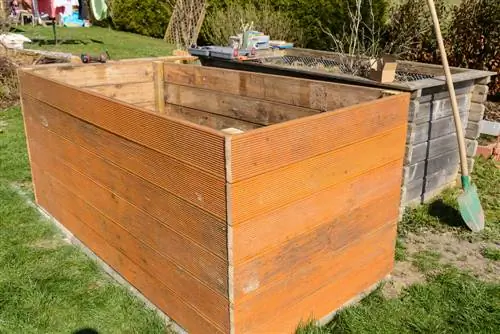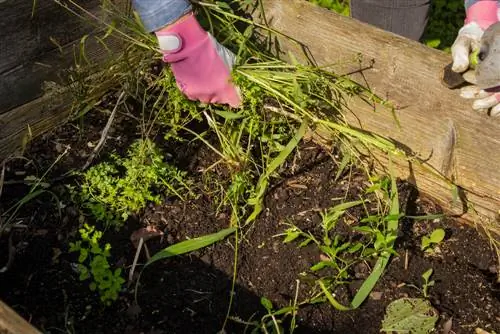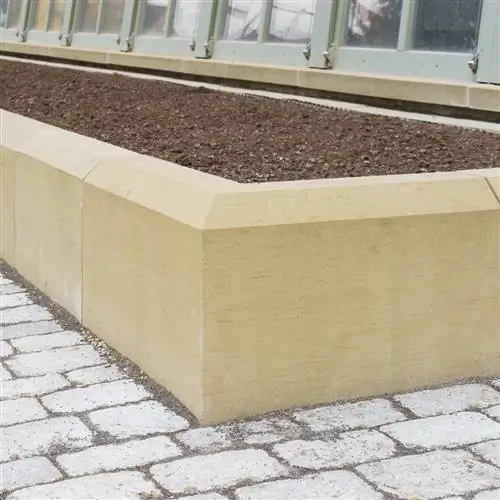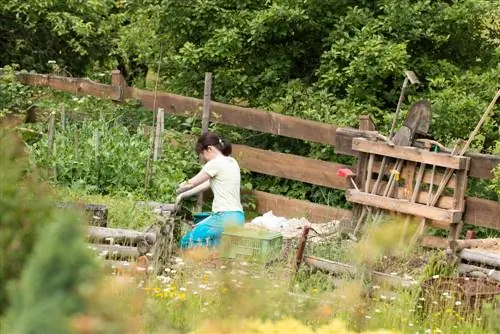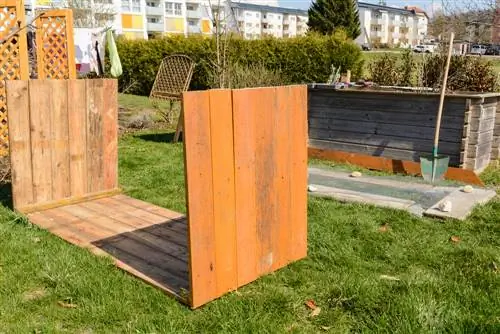- Author admin [email protected].
- Public 2023-12-16 16:46.
- Last modified 2025-01-23 11:21.
Autumn is the ideal time to create new raised beds and to renew the interior of existing beds as soon as they have sagged after a few years. On the other hand, there is no need for digging, as is common on beds with heavy soil.
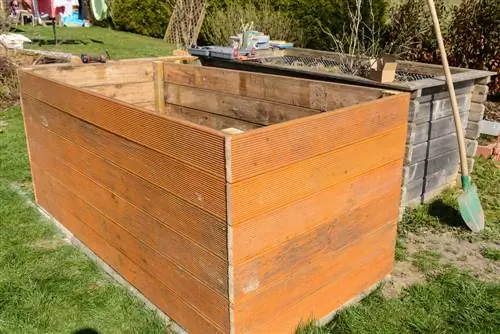
Why should you create a raised bed in autumn?
Creating the raised bed in autumn is ideal because you can use it as a composter over the winter, garden and kitchen waste can be recycled and a supply of nutrients will be created by spring. This also prevents the already planted bed from sinking.
Why filling in autumn is particularly advantageous
Filling the raised bed in autumn is preferable to filling it in spring for various reasons, at least if it is a compost raised bed:
- You can use the raised bed as a composter all winter long.
- Garden and kitchen waste, well shredded, finds a grateful place here.
- The compost can mature in peace for months
- so that there is already a good supply of valuable nutrients by spring.
- This also prevents an already planted bed from sinking.
- By spring the compost raised bed will have already sagged significantly.
- In this case, simply add good potting soil.
When layering, make sure that the various components are not too coarse. In particular, grass clippings, animal bedding, chopped wood or other waste should only be spread thinly.
Planting fast-growing vegetables in spring
You can also put a sudden sagging of the bed into perspective by planting fast-growing vegetables such as radishes, salads and spinach in the spring. They are all characterized by a very short growing season, so that after the soil has been removed you can first refill the bed.
Protecting raised bed boxes in autumn
However, you should also make sure to make your newly built raised bed winter-proof - this is especially true if you built the box out of wood. Wood is very sensitive to moisture and will rot quickly if exposed to excess moisture. To avoid this, you can wrap the wooden bed boxes (€49.00 on Amazon) with garden fleece like flower pots. Do not place wooden parts of the bed directly on the ground, but rather avoid direct contact with the ground - for example by building the bed on paving slabs. Brick raised beds are also at risk: water penetrating in frost can damage the walls and lead to cracks. This can be prevented by particularly careful brickwork.
Tip
If you just want to fill your raised bed with soil or want to benefit from the heat development in spring, then we recommend creating the bed in early spring. You can combat sagging by regularly topping up compost soil.

